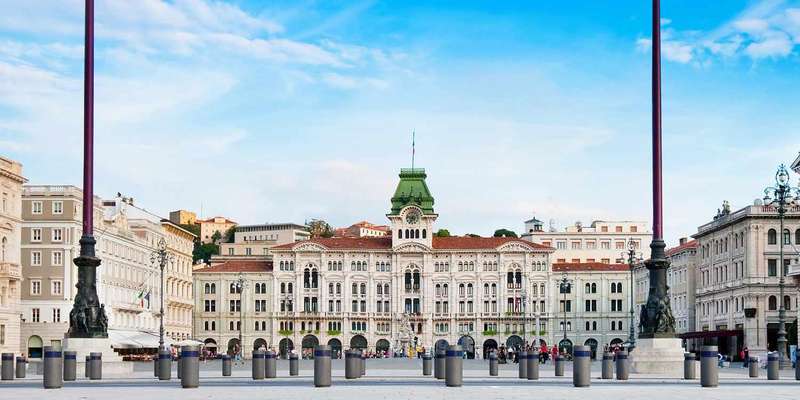- Home
- Useful Tips
- Visitng Miramare Castle:...
Visiting Miramare Castle presents travelers with a classic European dilemma: how to experience a breathtaking historical site without wasting precious vacation hours in ticket lines or missing its hidden stories. Over 300,000 annual visitors compete for views of the castle's glittering Adriatic vistas and pristine gardens, with peak season queues stretching over 90 minutes according to regional tourism data. First-time guests often leave unaware of the secret grotto beneath the castle or the optimal sunset viewpoints, while families struggle to keep children engaged during lengthy historical tours. The castle's cliffside location creates additional logistical challenges, with parking shortages and confusing public transport connections deterring many would-be visitors. These frustrations transform what should be a highlight of any Trieste itinerary into a source of stress, particularly for travelers with limited time in this enchanting border region between Italy and Slovenia.


Avoiding the ticket queue trap at Miramare Castle
The shimmering white walls of Miramare Castle tempt every passerby along the Trieste coastline, but most visitors make the critical error of arriving during standard mid-morning hours. Savvy travelers instead target the golden hours – either the first entry slot at 9am when coach tours haven't yet arrived, or the final two hours before closing when day-trippers depart. Tuesday mornings prove particularly quiet, while Sundays see the worst congestion. For those who absolutely must visit at peak times, the castle's online reservation system (available 30 days in advance) provides timed entry slots that bypass 85% of the queue. Physical tickets can also be purchased without waiting at the nearby Barcola kiosk, a little-known alternative sales point locals use during summer months. Remember that the gardens require separate admission but remain accessible even when castle interiors reach capacity, offering panoramic views without the claustrophobic crowds.
Decoding Miramare's hidden spaces and stories
Beyond the opulent state rooms that dominate guidebook photos, Miramare conceals layers of history most visitors completely miss. The castle's underground naval grotto – originally designed as a private bathing area for Maximilian I – now houses fascinating marine biology exhibits rarely mentioned in tourist materials. Docents report that fewer than 15% of guests discover the 'Sala dei Gabbiani' seagull room, where the archduke's maritime obsession reveals itself in intricate ceiling frescoes. For photography enthusiasts, the western garden's camellia path leads to an unmarked viewpoint where the castle appears to float on the Adriatic, especially magical during golden hour. Those intrigued by Habsburg history should listen for the audio guide's Chapter 14, which details how Maximilian's Mexican imperial ambitions influenced the castle's unusual architectural hybrids. These nuances transform a pretty coastal palace into a deeply personal historical document, provided you know where to look.
Navigating transportation without the hassle
Miramare's cliffside perch creates deceptively complex access challenges, particularly for travelers relying on public transport. While bus line 6 from Trieste's city center seems convenient, its infrequent weekend schedule and overcrowded summer departures make alternatives worthwhile. The 25-minute coastal walk from Barcola delivers stunning sea views and bypasses transport headaches entirely, passing hidden WWII bunkers most tourists never notice. Drivers should know the castle's main lot fills by 10:30am, but the Grignano marina parking (700m north) consistently has spaces at half the price. For a truly stress-free arrival, consider the seasonal ferry from Trieste's Molo Audace – this 40-minute voyage not only drops you at the castle's private dock but provides the same breathtaking approach Maximilian himself would have taken. Disabled visitors will appreciate the accessible shuttle running from the lower gardens to the castle entrance, a service many miss because its signage is only in Italian.
Tailoring your visit to personal interests
Miramare reveals different facets to different visitors, but most standard tours take a one-size-fits-all approach that leaves niche interests unaddressed. Garden enthusiasts should prioritize the castle's arboretum, where Maximilian imported exotic species from his global travels – the giant sequoias near the eastern perimeter are among Europe's oldest. Architecture buffs will want to examine the unusual mix of medieval, Byzantine, and maritime elements in the castle's exterior detailing, best appreciated from the rocky outcrops below the main terrace. Families with children find success focusing on the castle's more whimsical features like the duck-shaped gutters and the miniature naval observatory, while romantic travelers often secure permission (via written request) to access the secluded 'Bagno della Duchessa' seaside platform. However you choose to experience Miramare, remember that the castle's magic lies not in checking off rooms but in connecting with the eccentric vision of its creator – a man who built this seaside fantasy only to abandon it for an ill-fated empire across the ocean.



